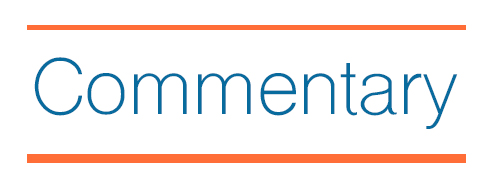
It is tempting, in the early days of 2021, after one of the most harrowing years any of us can remember, to look ahead to brighter times (a vaccinated end to the Covid-19 pandemic, students returning to classrooms, a new, more higher education-friendly administration) and think that soon all might return to normal.
But for community colleges, this is unlikely to be the case. The major challenges the colleges face long pre-date the events of the past year and will not go away on their own, even with substantial one-time infusions of federal dollars. Decades of state and local disinvestment in community colleges, coupled with heightened pressure for workforce credentials and greater educational attainment, mean that each year the institutions are asked to do more with less.

As well, the increasingly fast pace of societal and technological change means that the way we prepare students for traditional careers is no longer sufficient to train them for the jobs of the future.
College leaders thus face incredible pressure to seek out new, more entrepreneurial approaches to raising money, cutting costs and redesigning programs. Yet while community colleges are quite experienced in adapting to external pressures — adding a program here, taking on a new type of student there — historically they have not been particularly well equipped to innovate, or to engage in the type of creative, intentional change that may disrupt established ways of doing business.
However, it is precisely this type of entrepreneurial approach that is necessary to deliver on the community college mission in the years to come. Indeed, as I argue in Creating Entrepreneurial Community Colleges, A Design Thinking Approach (Harvard Education Press, 2021), if community colleges are to survive the challenges they face today and be as influential in the 21st century as they were throughout the 20th, they must adopt an entrepreneurial mindset, experiment with opportunities to serve students and communities in new and fiscally sustainable ways, and redesign outmoded organizational structures and financial processes that keep the colleges tethered to previous assumptions about the world.
Creating a problem-solving culture
To accomplish this entrepreneurial turn, community college leaders will need to develop campus cultures that embrace innovation and reward collaboration, enable risk-taking and support iterative problem-solving. They will also need to directly address the fears and concerns that many — especially faculty — have about more closely aligning public institutions with private interests, or what might happen to their jobs or departments under a new, more entrepreneurial paradigm.
This will not be easy. Tenure and collective bargaining agreements support expansion of the colleges’ à la carte model of providing something for everyone but inhibit contraction. Internal resistance from stakeholders who focus on constraints over opportunities can stand in the way of true collaboration and innovation. And fears that entrepreneurial thinking will lead to the prioritization of profits over students and/or an erosion of academic values can limit new ideas about industry partnerships and profit-generating initiatives.
To help overcome these challenges and cultivate more collaborative, innovative cultures, college leaders will need to adopt an approach to entrepreneurship which ensures that any new ventures amplify — rather than sacrifice — the institution’s mission and the needs of its students and communities.
Design thinking — a fundamentally human-centered process in which a diverse group of professionals seeks a deep understanding of stakeholder needs and then tests the desirability and feasibility of new ideas through hands-on experimentation and prototyping — provides just such a framework. The process is exceptionally well suited to the challenge of community college entrepreneurship, as it is grounded in empathy for college stakeholders and prioritizes the colleges’ mission and values throughout all stages of the innovation process, thus heading off one of the major critiques of entrepreneurial activities: that revenue-generating behaviors are antithetical to higher education’s commitment to serve the public good.
A mission-oriented approach
As I argue in Creating Entrepreneurial Community Colleges, positioning a college’s entrepreneurial actions as market-oriented, as many scholars and commentators critical of such activities often do, creates the false dichotomy that a college either serves students or serves the market. Because design thinking begins by empathizing with stakeholder needs and iteratively prototypes and tests new programs or ideas with those same stakeholders, the process can guide colleges in pursuing a mission-oriented approach to fiscal sustainability.
Given the immense challenges community colleges face — which have been compounded by the events of the past year — a mission-oriented entrepreneurial approach may be necessary for our community colleges to survive, and it is certainly necessary if they are to radically rethink how they educate and train students, participate in the economic transformations of their communities, and experiment with the internal changes necessary to sustain innovative ideas.
College leaders who embrace design thinking as an approach to mission-oriented entrepreneurship, provide training and opportunities for faculty and staff to practice it, and work collaboratively to develop a culture that values and rewards an entrepreneurial mindset will be well-positioned to help their institutions transcend a history of incremental change and become more responsive, innovative, and financially secure.
* * *
Carrie B. Kisker, Ph.D., is an education research and policy specialist with Kisker Education Consulting and a director of the Center for the Study of Community Colleges. Her latest book, Creating Entrepreneurial Community Colleges, A Design Thinking Approach (Harvard Education Press, 2021), is available now.





